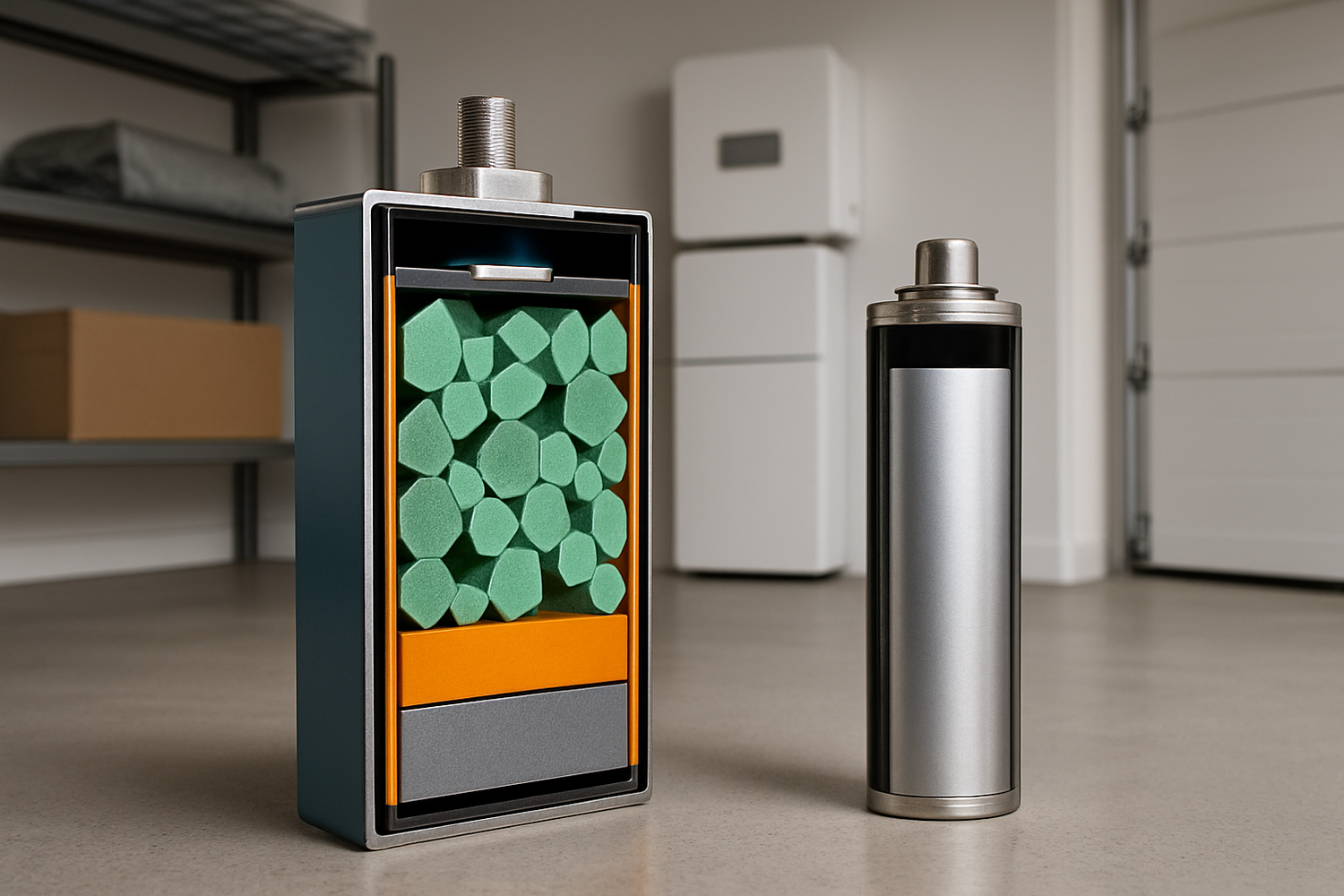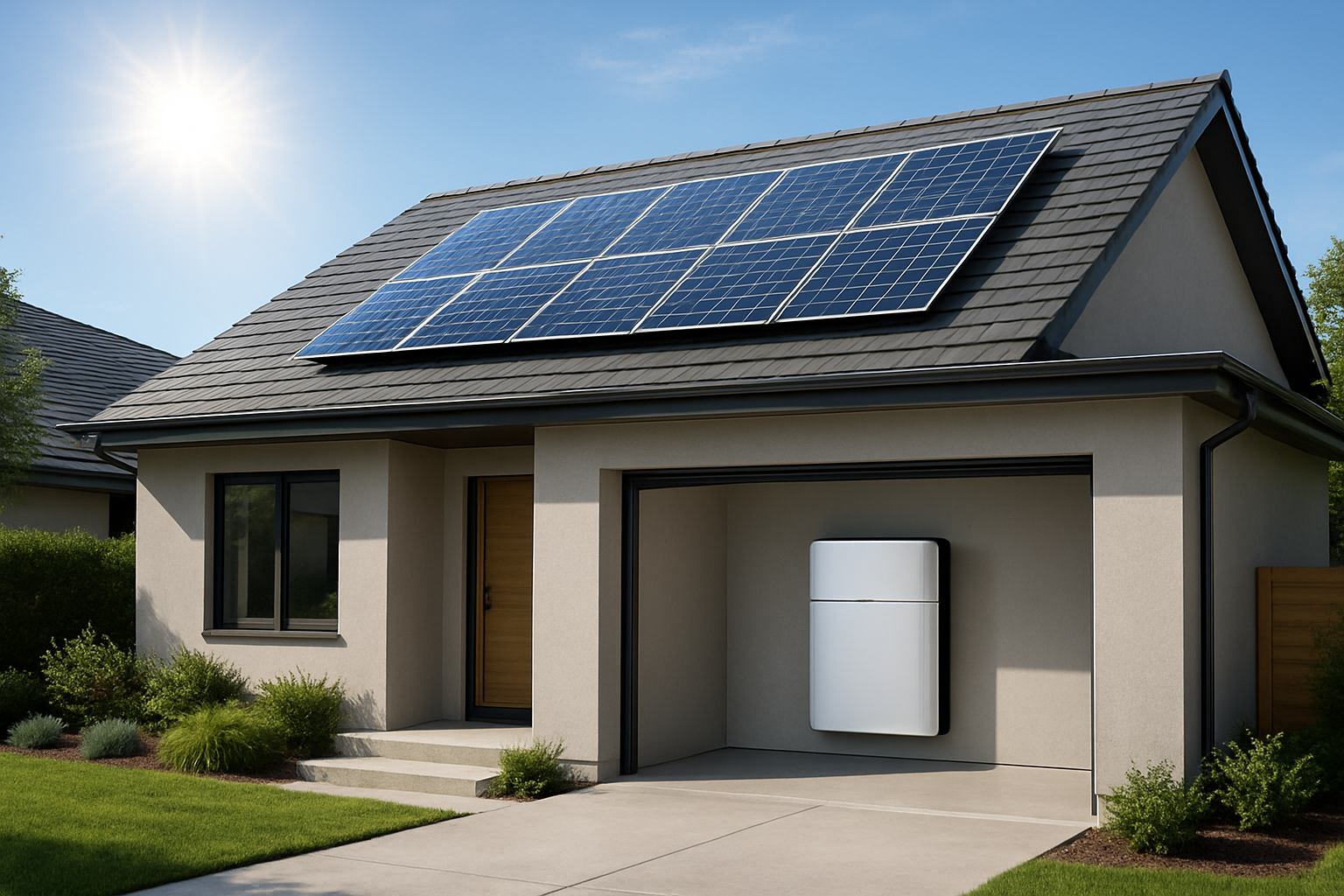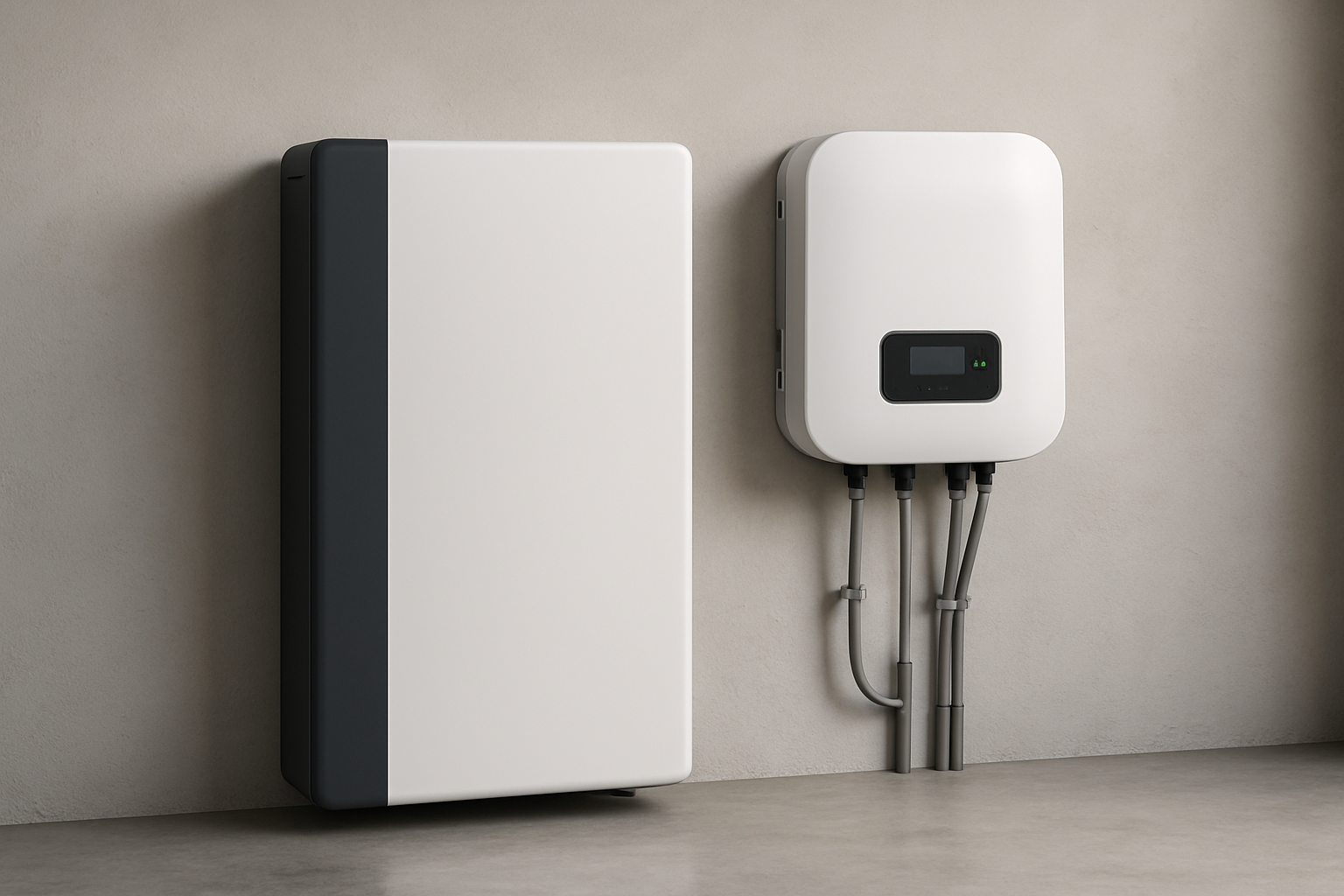Choosing the right battery for a solar energy storage system is a critical decision. It directly impacts your system's efficiency, safety, and long-term value. When exploring 12-volt deep cycle batteries, you will encounter various lithium-ion technologies. This comparison focuses on Lithium Iron Phosphate (LiFePO4 or LFP) and other common lithium-ion chemistries, like Nickel Manganese Cobalt (NMC), to clarify which is better suited for your solar storage needs.
Understanding the Lithium-Ion Family
What Are Deep Cycle Batteries?
A deep-cycle battery is designed to provide steady power over a long period and to be repeatedly discharged and recharged. Unlike a car's starter battery, which delivers a quick burst of energy, a 12V deep cycle battery is the workhorse of a solar energy system, storing energy from your panels during the day and releasing it to power your home when the sun isn't shining. The U.S. Department of Energy supports the development of these technologies to help integrate more renewable energy into the nation's electric grid.
A Look at Lithium-Ion Chemistries
The term 'lithium-ion' refers to a broad family of battery types. The key difference between them is the material used for the cathode. While NMC batteries are known for high energy density, making them popular for portable electronics and electric vehicles, LiFePO4 batteries have a unique set of characteristics that make them exceptionally well-suited for stationary energy storage. For home and off-grid solar applications, the priorities shift from portability to safety, longevity, and reliability.
The Core Comparison: LiFePO4 vs. Other Lithium-Ion (NMC)
Safety and Thermal Stability
Safety is a non-negotiable aspect of a home battery storage system. LiFePO4 batteries have a significant advantage here due to their chemical structure. The strong phosphorus-oxygen bonds in the LiFePO4 cathode create a stable olivine structure that is much less prone to thermal runaway—a dangerous condition where the battery overheats and can catch fire. NMC batteries, in contrast, can become unstable at lower temperatures (180-250°C), whereas LiFePO4 batteries remain stable up to much higher temperatures. This inherent stability provides a crucial safety margin for residential and off-grid solar solutions.
Lifespan and Cycle Count
A battery's lifespan is measured in charge-discharge cycles. This is where LiFePO4 technology truly excels. A high-quality 100ah lithium iron phosphate battery can typically endure between 3,000 and 7,000 cycles while retaining a high percentage of its original capacity. In comparison, NMC batteries generally offer 1,000 to 2,000 cycles under similar conditions. This extended lifespan means a LiFePO4 battery will last significantly longer, reducing the need for costly replacements and offering superior long-term reliability for your solar setup.
Performance and Efficiency
While NMC batteries offer higher energy density—meaning more energy in a smaller space—this is less critical for stationary applications like a home battery storage system where space is not the primary constraint. LiFePO4 batteries provide a very flat voltage discharge curve, delivering consistent power until the battery is nearly depleted. They also boast high round-trip efficiency, typically above 90%, ensuring that most of the solar energy you store is available for you to use. For a comprehensive look at how these factors affect real-world use, you can review this ultimate reference on solar storage performance, which details key performance indicators for energy storage solutions.
| Feature | LiFePO4 (LFP) | Lithium-Ion (NMC) |
|---|---|---|
| Cycle Life | 3,000 - 7,000+ cycles | 1,000 - 2,000 cycles |
| Safety | Excellent thermal stability, low risk of thermal runaway | Less stable at high temperatures, higher risk |
| Energy Density | Lower (90-120 Wh/kg) | Higher (150-220 Wh/kg) |
| Operating Temperature | Wider range, better performance in heat | Narrower range, sensitive to high temperatures |
| Cost | Lower long-term cost, potentially higher upfront | Lower upfront cost, higher long-term cost |
Cost Analysis: Upfront Investment vs. Long-Term Value
Initial Purchase Price
Historically, the upfront cost of a 12v 100ah lithium ion battery using NMC chemistry might be lower than a comparable LiFePO4 battery. This is partly due to NMC's higher energy density and established manufacturing for the EV market. However, battery costs have fallen dramatically across the board. The International Renewable Energy Agency (IRENA) reports that the total installed cost of battery energy storage systems has dropped significantly, making all lithium technologies more accessible.
Levelized Cost of Storage (LCOS)
A smarter way to evaluate cost is the Levelized Cost of Storage (LCOS), which calculates the cost per kWh delivered over the battery's entire lifespan. Because a LiFePO4 battery delivers two to three times more cycles than an NMC battery, its LCOS is substantially lower. When you factor in the longevity and durability of a LiFePO4 battery, it becomes the more economical investment for a solar energy storage system.
Making the Right Choice for Your System
For most 12V deep cycle applications, particularly in solar battery storage for homes, farms, or off-grid living, LiFePO4 is the superior choice. Its unmatched safety profile, exceptionally long cycle life, and excellent long-term value provide the reliability and peace of mind needed for energy independence. While other lithium-ion chemistries have their place, the specific demands of a stationary energy storage system align perfectly with the strengths of LiFePO4 technology. As the IEA's Special Report on Batteries and Secure Energy Transitions highlights, the versatility and falling costs of battery storage are making it a cornerstone of the clean energy transition.
Frequently Asked Questions
Can I use any lithium-ion battery for my solar system?
It is not recommended. You need a deep cycle lithium battery specifically designed for the repeated, prolonged charge and discharge cycles typical of a solar energy storage system. Starter batteries, even if they are lithium-ion, are not built for this purpose and will fail quickly.
Is LiFePO4 heavier than other lithium-ion batteries?
Yes, due to its lower energy density, a LiFePO4 battery of the same capacity will be slightly larger and heavier than an NMC battery. However, it is still significantly lighter than traditional lead-acid batteries, and for a stationary home battery storage system, this slight difference in weight is rarely a deciding factor.
What is the main advantage of LiFePO4 in a home battery storage system?
The primary advantages are superior safety and a much longer lifespan. The chemical stability of LiFePO4 drastically reduces the risk of fire, and its ability to handle thousands of charge cycles means it will serve your home for many years, providing a better return on your investment.





Leave a comment
All comments are moderated before being published.
This site is protected by hCaptcha and the hCaptcha Privacy Policy and Terms of Service apply.